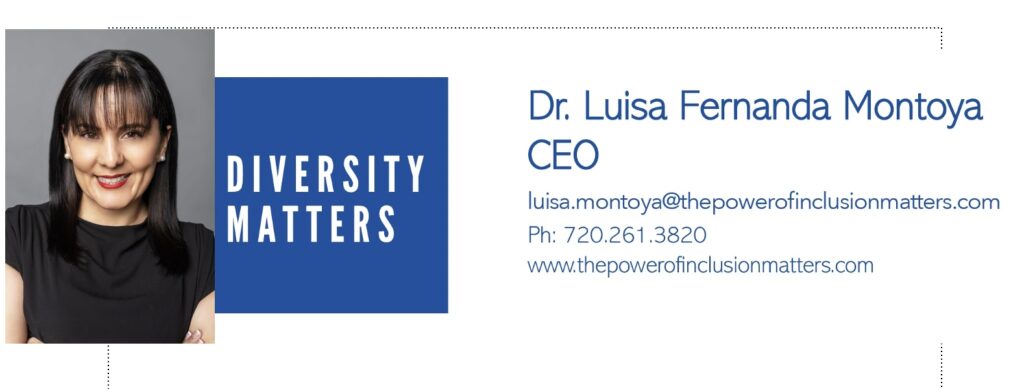
HABLEMOS DE INCLUSIÓN
By Dr. Luisa Montoya
Haga click aquí para leer la versión en español
This July 26th, we celebrate National Disability Independence Day to commemorate the signing of the Americans with Disabilities Act (ADA) in 1990. The ADA is a landmark legislation that prohibits discrimination against individuals with disabilities and ensures their access to employment, public accommodations, transportation, and other aspects of daily life. Unfortunately, ableism (discrimination against individuals with disabilities) continues to persist in many workplaces. Let’s explore how business leaders can create a more accessible and inclusive environment for people with disabilities:
- Education and Awareness: Business leaders must educate their workforce about disability rights, inclusion, and the detrimental effects of ableism. Training programs and workshops can help dispel misconceptions, reduce biases, and foster empathy and understanding among employees.
- Physical Accessibility: Companies should ensure that their workplaces are physically accessible by providing wheelchair ramps, accessible parking spaces, elevators, and adjustable workstations. Considerations such as Braille signage and auditory alerts can enhance accessibility for employees with visual or hearing impairments.
- Technological Accessibility: Organizations should adopt and implement technology that supports employees with disabilities, such as screen readers, voice recognition software, captioning and transcription services, and other assistive technologies. Making digital platforms and websites accessible can also facilitate equal access to information and job opportunities.
- Reasonable Accommodations: Employers should be proactive in offering reasonable accommodations to employees with disabilities. These accommodations may include flexible work hours, modified job duties, or specialized equipment. Open communication with employees about their needs and preferences is crucial in providing appropriate accommodations.
- Inclusive Policies and Practices: Organizations should establish inclusive policies that protect employees against ableism and promote equal opportunities for advancement. Encouraging diverse hiring practices, promoting disability representation in leadership roles, and creating mentorship programs can help bridge the gap and empower individuals with disabilities in their professional growth.
- Employee Resource Groups (ERGs): Establishing ERGs dedicated to disability inclusion can provide a platform for employees to share experiences, offer support, and drive positive change. ERGs can advocate for policies, organize awareness campaigns, and collaborate with management to foster a more inclusive work environment.
By promoting awareness, implementing accessible infrastructure, providing reasonable accommodations, and fostering an inclusive culture, organizations can create an environment that embraces the talents and contributions of all employees. A truly inclusive workplace is not only a legal and moral obligation but also a catalyst for innovation, growth, and collective success!

You may also like:
Experience the Joy and Music of Colombia






otras noticias
Run, Breathe, and Be Amazed at LUNA
Colorado Legislature Approves Law to Boost Food Truck Industry
Polis has 30 days to sign, veto, or let SB25-276 take effect